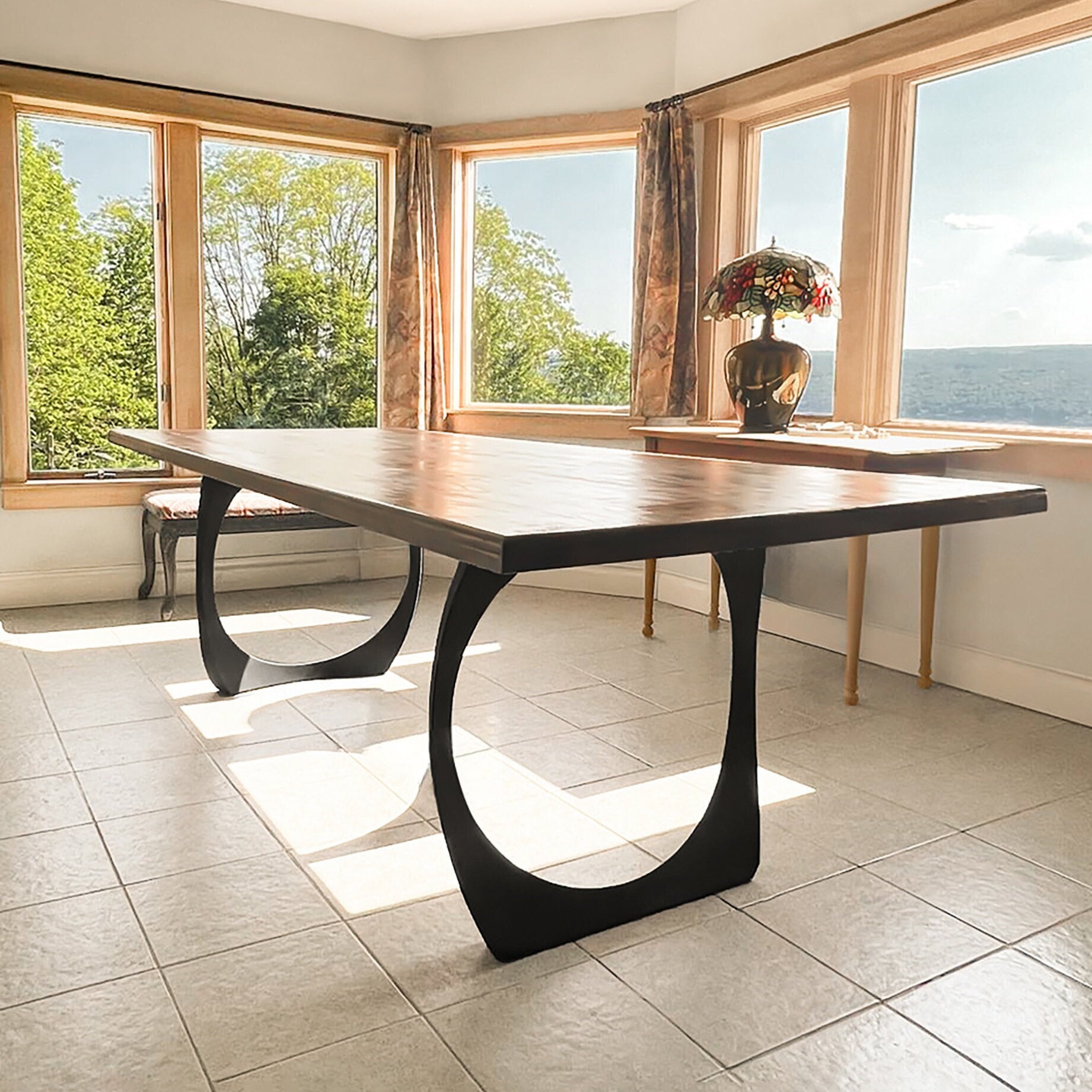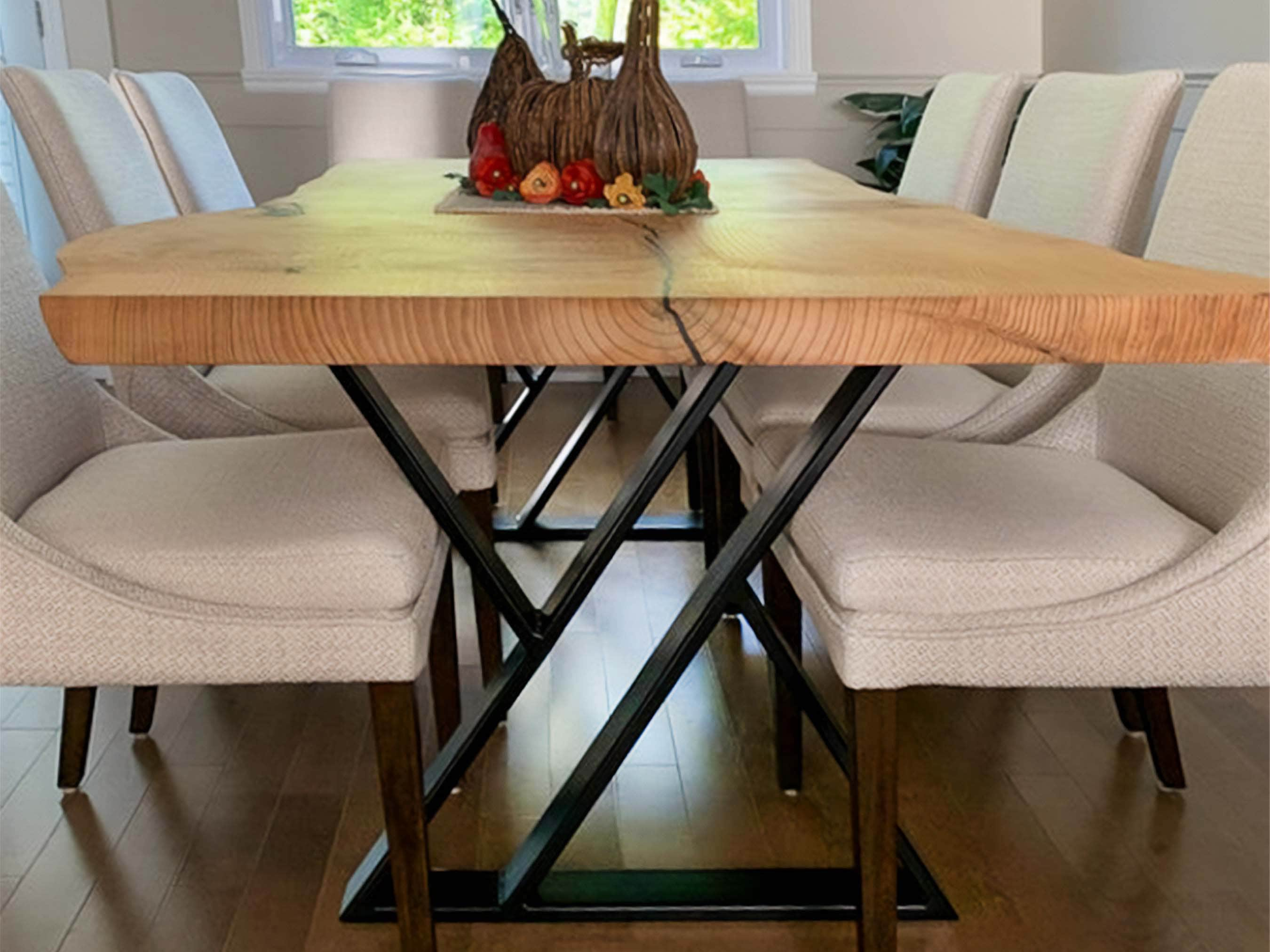An In-depth Look at Eating Table Leg Styles: Finding the Perfect Match
Selecting the appropriate eating table leg style is crucial for both visual charm and practical capability. Typical 4 legs use ageless elegance and stability, while the pedestal base supplies enhanced legroom and a modern-day look. For those with larger tables, trestle legs ensure tough assistance, whereas barrette legs introduce a mid-century modern ambiance with their minimalist layout. The x-shaped legs mix modern style with improved stability. Each of these choices brings unique advantages, making the option more than just a matter of choice. Explore additionally to find which design flawlessly enhances your dining area and lifestyle.
Typical Four Legs
Amongst the different sorts of dining table leg designs, the conventional four-leg design continues to be a timeless choice for lots of families. This timeless setup offers a harmonious mix of functionality and aesthetic appeals, making it a perennial fave. 4 legs provide well balanced support, making certain the table remains steady and with the ability of bearing considerable weight. This is specifically advantageous for houses that frequently hold large celebrations or use their table for multiple objectives, such as work or crafting.
From a visual perspective, the traditional four-leg style can be easily adjusted to various interior styles. Whether crafted from timber, steel, or a mix of products, these legs can be delicately carved, streamlined and minimalistic, or anything in between. Their flexibility allows them to complement both rustic and modern setups perfectly.
In addition, the simple framework of the four-leg layout assists in ease of activity and positioning within an area. Unlike even more facility bases, this style minimizes obstructions, offering ample legroom for restaurants. In summary, the standard four-leg eating table leg style marries sustaining elegance with functional capability, making it a sharp choice for those looking for both type and feature in their dining furniture.
Stand Base
Typically commemorated for its elegant and space-efficient layout, the stand base is a distinguished alternative to the traditional four-leg arrangement in eating table leg designs. This distinct base usually includes a single main column sustaining the table top, which can vary in form, from ornately sculpted timber to streamlined, contemporary steel. One of the main benefits of the pedestal base is its ability to make the most of legroom and seating adaptability. Without edge legs, restaurants are managed greater liberty of motion, making it a perfect choice for round and oblong tables that promote more intimate and comprehensive gatherings.
Moreover, the stand base's central assistance can handle considerable weight, permitting the usage of much heavier tabletops, such as marble or thick hardwood. This stamina coupled with its more information visual convenience makes the pedestal base a prominent selection in both standard and modern indoor setups. It can flawlessly incorporate with various design motifs, from classic sophistication to minimalist modernity. The main column itself uses a canvas for intricate layouts and imaginative expressions, including an element of visual interest beneath the table. In summary, the pedestal base integrates functionality snappy, making it an improved and practical choice for varied dining settings.
Trestle Legs
Trestle legs offer a durable and timeless foundation for dining tables, characterized by their horizontal cross-bracing and durable support beam of lights. Stemming from middle ages times, this style has evolved yet kept its necessary framework, making it a seasonal fave in both standard and contemporary setups. The central trestle beam, often sustained by 2 or more vertical messages, supplies phenomenal security, permitting for larger table sizes without the demand for added legs.
A substantial advantage of trestle leg tables is the adequate legroom they use. Unlike tables with 4 corner legs, the lack of blockages at the table's edges offers unblocked space for chairs and restaurants, boosting comfort and availability. This makes trestle tables perfect for suiting bigger events, whether in an eating area or a reception find hall.
The aesthetic flexibility of trestle legs is significant. Offered in a selection of products such as wood, steel, and composite, they can be ended up to match a large range of interior styles. From rustic farmhouse to streamlined modern-day designs, trestle legs can be tailored to suit specific preferences. Their enduring allure and useful advantages make trestle legs an engaging option for those looking for both design and functionality in their eating table.
Hairpin Legs

The allure of hairpin legs depends on their simplicity and flexibility - dining room table legs. Available in a variety of products, including steel and brass, they can be ended up in numerous colors to match different indoor designs. Whether matched with a rustic wood table top or a modern glass surface area, barrette legs easily mix functionality with a touch of Discover More Here vintage appeal
Durability is another significant function of barrette legs. Regardless of their delicate look, these legs are crafted to birth considerable weight, guaranteeing the table remains steady and safe. Additionally, they are reasonably easy to set up, making them a preferred choice for do it yourself lovers and specialist furnishings manufacturers alike.
X-Shaped Legs

Built from products such as steel, wood, or a combination of both, X-shaped legs can be customized to match different style preferences. Steel legs frequently provide a smooth and industrial feeling, ideal for loft-style apartment or condos and contemporary eating spaces.
Furthermore, the engineering behind X-shaped legs makes sure also weight distribution, lessening the risk of wobbling and improving longevity. This makes them specifically fit for bigger eating tables that require added assistance. In essence, X-shaped legs mix practical design with modern appearances, making them an ageless choice for varied dining environments.
Conclusion
A detailed understanding of dining table leg designs discloses the distinct features and advantages of each layout. Trestle legs guarantee durable assistance for larger tables, and barrette legs present a mid-century modern-day visual.